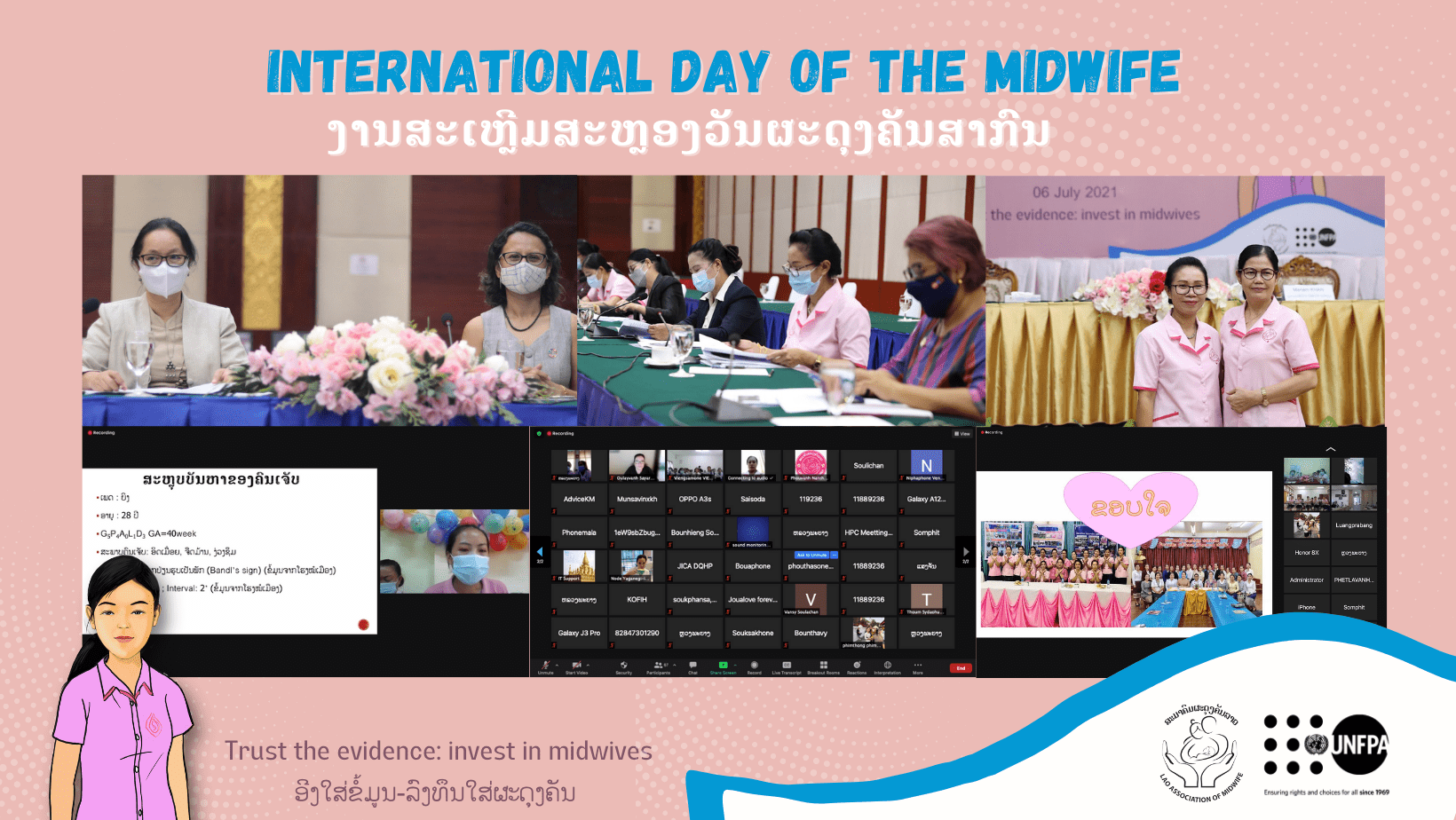-Vientiane Capital, 6 July 2021 - A virtual event conducted by the Ministry of Health (MoH) with support from the United Nations Population Fund (UNFPA) Laos under the theme: “Follow the Data, Invest in Midwives” highlights the importance of midwives’ role in saving lives of mothers and babies and the needs for investment in midwives. The event saw participants from MoH, the Lao Association of Midwives (LAMs), the Lao Association of Obstetrics and Gynecology, including midwives, midwifery students, and development partners.
Midwives play a vital role in sexual, reproductive, maternal, newborn, and adolescent health (SRMNAH). They are essential providers of life-saving services for mothers and their newborns, including primary health care for women and girls, contributing to the prevention of maternal and newborn deaths. Globally, midwives save millions of lives each year.
Dr Chanthanorm MANITHIP , Acting dean cabinet officer of Ministry of Health said “The international midwifery day celebration in Lao PDR is a significant event that demonstrates the government party's commitment to increasing attention to the health of Lao women, particularly in the areas of sexual, reproductive, maternal, new born, and adolescent health (SRMNAH). Seeking support from leaders at all levels, from central and district authorities, to be more receptive and to assist individuals, families, and communities realize the importance of maintaining maternal and child health. Convincing husbands and families to accept women's decision to take care of their own health, including family planning”
The government has made significant progress over the past years. With support from UNFPA, more than 1,500 midwives have been trained and deployed across the country. Midwives have contributed to maternal health care improvement such as safe pregnancy and delivery, including access to family planning. According to the UN estimates, maternal mortality has dropped from 544 deaths in 2000 to 185 per 100,000 in 2017.
Challenges posed by COVID-19 to all areas, including the health sector, have led the government to adopt new ways of providing healthcare services and ensure their continuity. With support from UNFPA and partners, innovative approaches have been applied, such as the telehealth initiative to enable continual safe access to health information and services for pregnant women and breastfeeding women.
Despite progress and ongoing efforts, greater investment in midwives is needed. According to the State of the World Midwifery (SoWMY) Report 2021, fully educated, licensed and integrated midwives can deliver about 90% of essential SRMNAH interventions across the life course, yet they account for less than 10% of the global SRMNAH workforce globally.
While the essential SRMNAH interventions in Lao PDR have improved from 19% in 2014 to 62% as of the latest SoWMy report (2021), only about 12% of midwives are fully trained by international standards. To reach the targets set by 2030, almost 3000 more midwives would need to be trained to international standards. Thus, a significant investment in training new midwives and upgrading the roughly 1500 existing midwifery associate professionals is required.
However, education alone is not sufficient; midwives need to be deployed in adequate numbers and given the means to reach all women, particularly the most marginalized. The SoWMY report indicates four key areas that need to be addressed and invested in midwifery programs. These include midwifery education and training; health workforce planning, management and regulation, and the work environment; leadership and governance; and service delivery.
Mariam Khan, Country Representative of UNFPA Laos said: “Investing in midwives saves the lives of women and babies, and this year we found out that Laos is among the countries where the impact of midwives could be the highest in the world. In fact, with universal access to midwifery care, about two in every three women and babies dying could be saved.
This is why UNFPA is urging the government and all development partners to invest in midwives. There is a shortage of midwives worldwide, as was made clear by this year’s State of the World’s Midwifery report. In Laos, to reach the figures needed, 2000 more midwives need to be deployed and 1000 of the already deployed midwives need to have their skills and degree upgraded by 2030”
As part of celebrating the day, MoH and UNFPA Laos also conducted a Photo Contest on social media inviting all midwives and midwifery students to participate. The activity served as a platform for the participants to express their thoughts and aspirations towards their future.
More about the SoWMy Report 2021 please visit: https://lao.unfpa.org/en/publications
For more information please contact:
Esther Arendt
Midwifery Officer, UNFPA Laos
Phouvanh Nanthavong
Medical Officer, Ministry of Health Laos


